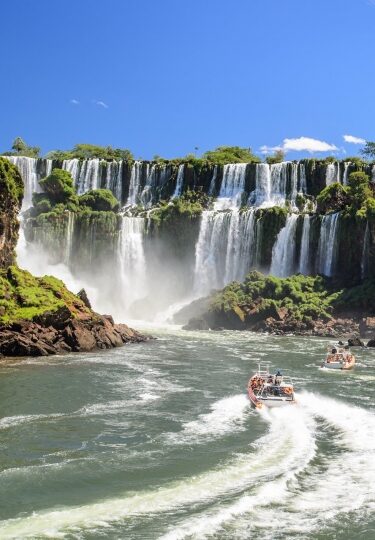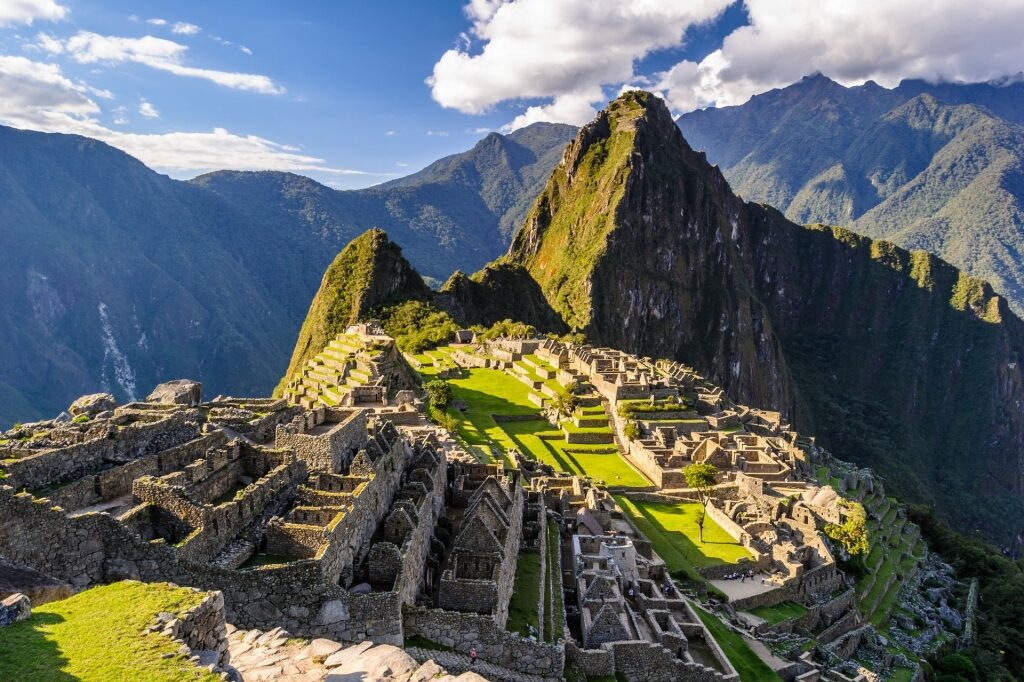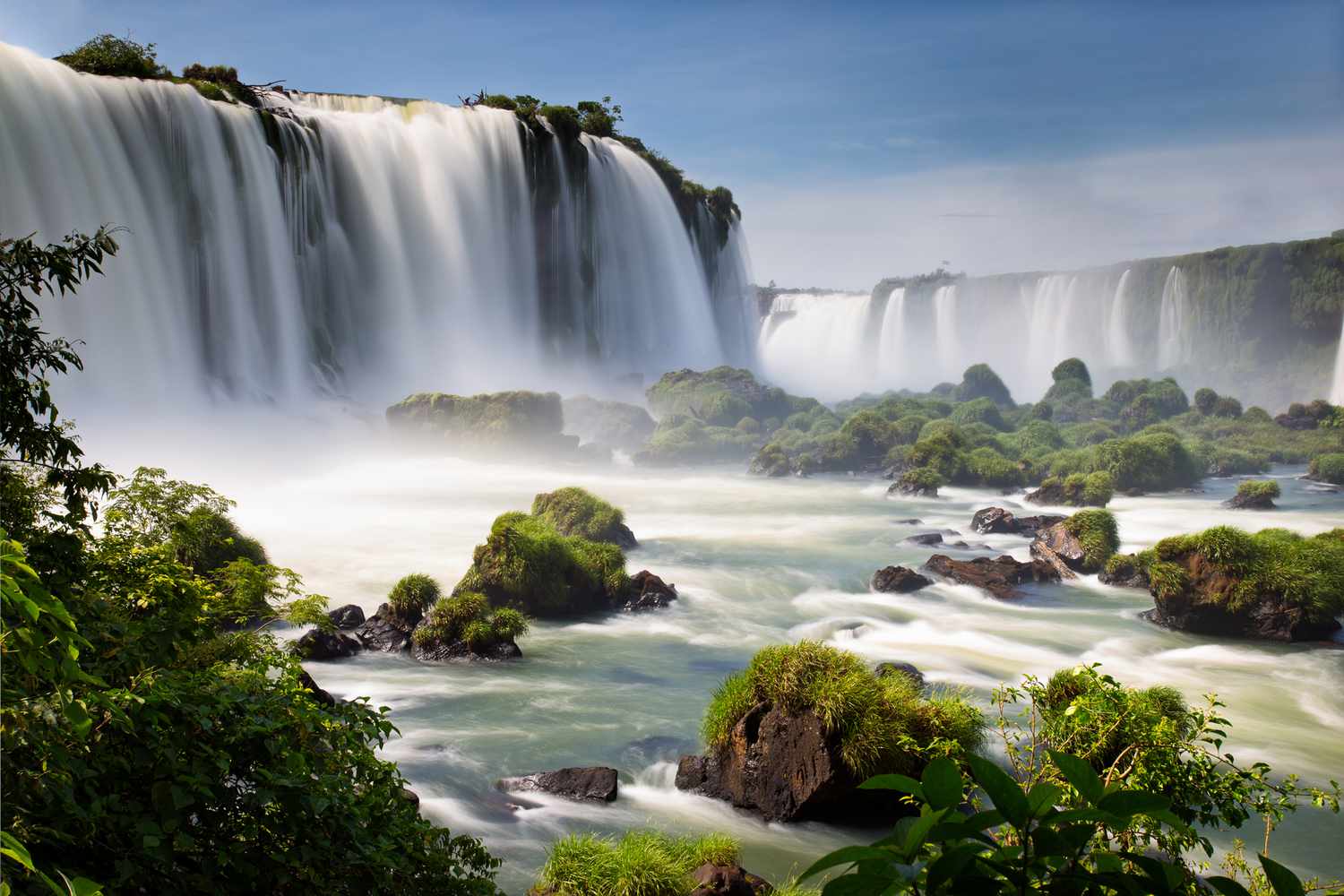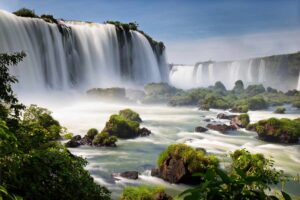Bolivia’s top tourist spots include Salar de Uyuni and La Paz, offering stunning landscapes and rich culture. Discover more about these attractions below. Let us explore top tourist spots in Bolivia, South America.
Nestled in the heart of South America, Bolivia boasts a diverse array of attractions that cater to every type of traveler. From the otherworldly salt flats of Salar de Uyuni to the vibrant markets and historical sites in La Paz, Bolivia is a treasure trove of unique experiences waiting to be explored.
Whether you’re seeking adventure in the Andean mountains or looking to immerse yourself in indigenous cultures, Bolivia has something for everyone. Let’s delve into the top tourist spots in Bolivia that showcase the beauty and charm of this captivating country.
1. Salar De Uyuni
Discover the awe-inspiring beauty of the world’s largest salt flat – Salar de Uyuni. Located in Bolivia, South America, this natural wonder is a must-visit destination for travelers seeking spectacular landscapes and photography opportunities. Let’s delve into the mesmerizing features that make Salar de Uyuni a truly extraordinary experience!
The World’s Largest Salt Flat
Salar de Uyuni spans an impressive 10,582 square kilometers (4,086 square miles), making it the largest salt flat in the world. This vast expanse of salt is a sight to behold, with its gleaming white surface stretching as far as the eye can see. The salt flat was formed thousands of years ago when prehistoric lakes dried up, leaving behind an enchanting natural phenomenon.
Otherworldly Landscape And Photography Paradise
Step into a surreal and otherworldly landscape as you explore Salar de Uyuni. Picture yourself standing amidst a seemingly endless expanse of salt, creating a surreal sense of infinity. This unique terrain provides an ideal backdrop for capturing stunning photographs. The flatness of the salt surface, combined with the clear blue sky, creates a mesmerizing reflection, resulting in breathtaking and mind-boggling visual effects.
Visiting Salar de Uyuni during the rainy season, from November to April, offers an even more extraordinary experience. When the salt flats are covered with a thin layer of water, the reflection creates a mirror-like effect, blurring the line between the sky and the ground. Photographers and nature enthusiasts will be in their element, capturing truly ethereal and captivating images of this natural wonder.
But it’s not all about the salt flats – Salar de Uyuni also boasts several intriguing natural formations and attractions. The nearby Tunupa Volcano adds to the dramatic scenery, providing a breathtaking backdrop for your photos. Travelers can also explore the Incahuasi Island, known for its towering cacti and stunning panoramic views of the salt flats.
Whether you’re a professional photographer, a nature lover, or simply in search of a mind-blowing destination, Salar de Uyuni is a feast for the senses. Its vastness, tranquility, and unparalleled beauty make it a must-visit for anyone seeking an experience that transcends the ordinary.

Credit: www.celebritycruises.com
2. Lake Titicaca
Lake Titicaca is a must-visit destination in Bolivia, the highest navigable lake in the world.
The Highest Navigable Lake In The World
Lake Titicaca is the highest commercially navigable lake globally, situated at an impressive elevation of 12,507 feet.
Indigenous Culture And Floating Islands
The area around Lake Titicaca is brimming with indigenous culture, and a visit offers a unique insight into the traditions of the local tribes.
3. La Paz
La Paz, the thriving capital city of Bolivia, is a vibrant destination that offers a unique blend of culture, history, and natural beauty.
Thriving Capital City
La Paz is known for its bustling streets, colorful markets, and rich indigenous heritage. The city’s unique location, nestled in a high-altitude valley surrounded by snow-capped peaks, offers visitors a one-of-a-kind experience.
Historic Architecture And Unique Urban Setting
The city boasts a mix of historic architecture and modern infrastructure, creating a unique urban setting that captivates visitors. From the iconic Witches’ Market to the impressive San Francisco Church, La Paz is a treasure trove of architectural marvels.
Explore the narrow alleys of the old town, where colonial buildings stand alongside traditional Andean homes. The juxtaposition of old and new in La Paz creates a dynamic atmosphere that is both charming and intriguing.
4. Sucre
Sucre in Bolivia stands out for its colonial architecture and vibrant markets, perfect for cultural immersion. Visitors can explore historic sites like Casa de la Libertad and Plaza 25 de Mayo, creating an enriching travel experience.
Sucre, the constitutional capital of Bolivia, is a city brimming with colonial charm and rich cultural heritage. Its picturesque streets and well-preserved architecture transport visitors back in time, earning it the status of a UNESCO World Heritage Site. In addition to its historical significance, Sucre also holds the title of being the country’s cultural capital, offering a vibrant arts scene and bustling artisan markets where traditional crafts are brought to life. Let’s dive deeper into the wonders of Sucre, Bolivia’s hidden gem.
Colonial Charm And Unesco World Heritage Site
Sucre’s colonial charm is evident in every corner of the city. As you meander through its cobblestone streets, you’ll be enchanted by the well-preserved colonial architecture that showcases the city’s illustrious history. The white-washed buildings adorned with intricate balconies and colorful courtyards create a picturesque backdrop, making Sucre a photographer’s paradise. Step into the historic Plaza 25 de Mayo, the heart of the city, and you’ll find yourself surrounded by majestic colonial buildings, including the breathtaking Metropolitan Cathedral. This architectural splendor has earned Sucre the prestigious title of a UNESCO World Heritage Site, ensuring its preservation for generations to come.
Cultural Capital And Artisan Markets
Beyond its architectural beauty, Sucre proudly carries the mantle of Bolivia’s cultural capital. The city is a hub of artistic and cultural expression, with numerous art galleries, museums, and theaters waiting to be explored. Immerse yourself in the local culture by visiting the ASUR Textile Museum, where the intricate art of traditional textiles is showcased, or discover the city’s rich history at the Casa de la Libertad museum. The Tarabuco Market, just a short distance from Sucre, beckons with its vibrant colors and cultural significance. Here, indigenous artisans proudly display their craftsmanship, offering visitors the chance to purchase authentic textiles, ceramics, and unique souvenirs. In conclusion, Sucre is a captivating destination that seamlessly blends colonial charm with cultural vibrancy. Whether you’re wandering through its historic streets, admiring the well-preserved architecture, or immersing yourself in its vibrant arts scene and artisan markets, Sucre offers a unique and enriching experience for every traveler.
5. Yungas Road
5. Yungas Road
Infamous ‘death Road’
The Yungas Road is notorious for being the “Death Road,” known for its harrowing reputation as one of the most dangerous routes in the world. This treacherous and awe-inspiring road winds through the stunning Yungas region, offering a spine-tingling journey for thrill-seekers and adventurers.
Adrenaline-fueled Mountain Biking Adventure
The Yungas Road presents an adrenaline-fueled mountain biking adventure unlike any other. It attracts daredevils and cycling enthusiasts who seek an exhilarating experience amidst breathtaking mountain scenery and dramatic cliff-side drops. With its challenging terrain and breathtaking vistas, this road offers an unmatched adventure for those with a thirst for excitement.

Credit: www.celebritycruises.com
6. Madidi National Park
6. Madidi National Park
Unspoiled Amazon Rainforest
The Madidi National Park in Bolivia offers a unique opportunity to explore the unspoiled Amazon rainforest. Its lush, verdant landscapes provide a captivating backdrop for nature enthusiasts and conservationists. The park is a haven for eco-tourists seeking an authentic Amazonian experience.
Diverse Wildlife And Eco-tourism
Madidi National Park is renowned for its abundant and diverse wildlife, making it a prime destination for eco-tourism. Visitors can witness a rich array of exotic species, including jaguars, tapirs, and macaws. The park is a sanctuary for nature lovers and adventure seekers.
7. Potosi
When exploring Bolivia’s remarkable tourist spots, Potosi stands out as a captivating destination. Known as the “Imperial City” during the Spanish colonial period, this charming city boasts a rich mining history that has shaped its identity.
Rich Mining History
With a mining history spanning centuries, Potosi enthralls visitors with its fascinating tales of wealth, labor, and endurance. This city played a pivotal role in Europe’s economy during the colonial era, thanks to its abundant silver mines.
Cerro Rico And Silver Mines
Among Potosi’s prominent attractions is the iconic Cerro Rico, a mountain that became synonymous with silver mining. The Cerro Rico, or “Rich Hill” in English, still holds numerous active and historic silver mines that offer intriguing glimpses into Bolivia’s mining heritage.
Exploring the silver mines is an unforgettable adventure where visitors can witness the challenging conditions endured by miners as they extract this precious metal from deep within the mountain’s heart. This experience allows you to gain a profound appreciation for their hard work, dedication, and the vital role they play in Potosi’s history.
Walking through the narrow tunnels and witnessing the incredible efforts undertaken by miners is a humbling experience. You’ll witness firsthand the legacy of Potosi’s silver industry, which influenced the global economy for centuries.
Moreover, while exploring the mines, you’ll learn about the struggles faced by miners and gain insight into their daily lives. These miners work tirelessly to extract silver, continuing a tradition that has been passed down through generations.
Visiting Potosi’s silver mines not only provides a unique understanding of Bolivia’s cultural heritage but also allows you to support local mining communities, contributing to their sustainable development.
So, if you’re looking for an extraordinary experience that combines history, culture, and adventure, Potosi with its rich mining history and iconic Cerro Rico is an unmissable destination in Bolivia.

Credit: cruisetogalapagos.com
Frequently Asked Questions For Top Tourist Spots In Bolivia, South America
What Are The Top Tourist Spots In Bolivia?
Bolivia offers a diverse range of must-visit spots, from the otherworldly Uyuni Salt Flats to the historic capital city of La Paz. Don’t miss the Amazon rainforest, Lake Titicaca, and the ancient ruins of Tiwanaku for a complete Bolivian adventure.
What Activities Can Tourists Enjoy In Bolivia, South America?
Visitors have a plethora of activities to choose from, including trekking in the Andes, exploring the colorful markets, wildlife spotting in the Amazon, and experiencing indigenous cultures. Adventure seekers can also indulge in mountain biking on the Death Road or birdwatching in the Chiquitano dry forest.
When Is The Best Time To Visit Bolivia For Tourists?
The optimal time to visit Bolivia is during the dry season, from May to October, when the weather is mild and the landscapes lush. Keep in mind that June and July are peak months for tourism, so plan your trip accordingly for a quieter experience.
Conclusion
To sum up, Bolivia in South America is a vibrant country that offers an array of captivating tourist spots. From the awe-inspiring Salar de Uyuni to the ancient ruins of Tiwanaku, this diverse land has something to offer every type of traveler.
Whether you crave adventure, cultural immersion, or breathtaking natural beauty, Bolivia has it all. So pack your bags and embark on a journey to discover the top tourist spots in Bolivia, where unforgettable experiences await you.




